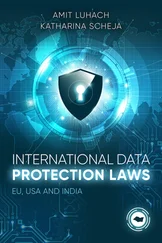As summarized earlier, there are a few different methods that may be used to calculate (and optimize) the amount of commission the IC-DISC may receive.
Four percent of its qualified export receipts, subject to export profit limitations
Fifty percent of its CTI (its export profits)
The actual amount earned by a buy-sell IC-DISC that has employees and operations of its own
Annual maintenance of IC-DISC
Once an IC-DISC is formed, annual requirements must also be met. These requirements include:
At least 95% of the gross receipts must be qualified export receipts.
A reasonable estimate of the commission must be paid within 60 days of the exporter’s tax year-end.
An IC-DISC tax return, Form 1120-IC-DISC, must be filed annually by the 15th day of the ninth month following the close of the IC-DISC’s taxable year. (The IC-DISC’s taxable year must be the same as that of its principal shareholder.)
The IC-DISC must maintain its own separate set of books and records.
International boycott (Israel) operations must be disclosed (in conjunction with Form 5713).
At least 95% of the IC-DISC’s assets must be qualified export assets that fall into several categories: export property, working capital (only the amount necessary for required working capital), commission receivable, stocks or securities of a related foreign export corporation, and producers’ loans.
Qualified export property must be
manufactured, produced, grown, or extracted in the United States, and
for use or consumption outside the United States.
Up to 50% of the fair market value of the export property can be attributable to foreign content.
Qualified export receipts include the following:
The sale, exchange, or other disposition of export property
The lease or rental of export property used outside the United States
Related and subsidiary services
Dividends from the related foreign export corporation
Interest on obligations that are qualified export assets
Engineering and architectural services for construction projects outside the United States
Sales made to U.S. distributors and sales made to foreign disregarded entities may qualify in some cases.
Chapter 2 Foreign Branches
Learning objectives
Recognize what the definition of a foreign branch is following the Tax Cuts and Jobs Act (TCJA), for U.S. income tax purposes.
Identify foreign branch income rules following the TCJA.
Identify the choice of entity classification rules — the “check-the-box” rules.
Recognize the concept of functional currency.
Recognize fundamental corresponding foreign currency tax issues.
Operating through a foreign branch — summary
After exporting goods from the United States, the next step for a U.S. business is conducting direct business operations overseas, either through foreign branch operations or through foreign subsidiary corporation(s). A foreign business operation may manufacture goods, provide services, or perform special functions (for example, advertising, financing, and sales). Frequently, a foreign business operation requires a significant number of full-time personnel, including people who are transferred from the United States to the foreign country.
U.S. taxpayers typically use the following approaches to establish a foreign branch.
1 Send personnel or employees or have an office in a foreign jurisdiction sufficient to be considered a branch but with no legal entity within the foreign jurisdiction (a true branch).
2 Establish a legal entity that is legally considered a branch within the foreign jurisdiction or country.
3 Form a legal entity/corporation within the foreign jurisdiction and make an entity classification election or check-the-box election to treat the entity as a foreign disregarded entity (FDE) for U.S. federal income tax purposes (a checked branch or an FDE).
Foreign Branch Income Taxation — Post-TCJA
For U.S. federal income tax purposes, a foreign branch is a division that operates a trade or business in a foreign country and maintains a separate set of books and records. The foreign branch generally is also subject to the income tax laws in the foreign country in which it operates.
The term branch describes a complete, distinct business operation of a U.S. corporation. Although a branch may be separate with respect to function, personnel, or location, it is part of the same U.S. corporation. As before the TCJA, income, deductions, losses, and credits of the foreign branch are considered in calculating the tax liability of the U.S. consolidated group (that is, flow-up). The income of a foreign branch is subject to the 21% corporate tax rate.
Losses of the branch flow into the U.S. consolidated group and reduce taxable income of the group. Dual consolidated loss (DCL) rules, however, provide that such losses cannot be used currently if the losses can also be used by a foreign subsidiary to reduce its income under foreign law.
Definition of a foreign branch for U.S. federal income tax purposes post-TCJA
The proposed rules define a foreign branch by reference to the Section 989 regulations, with modifications, such that a foreign branch must carry on a trade or business outside the United States and maintain a separate set of books and records. Therefore, activities undertaken within the United States would be excluded when determining whether activities rise to the level of a trade or business outside the United States. Under Section 1.989(a)-1(c), for activities to constitute a trade or business, they “must ordinarily include the collection of income and payment of expenses.” This requirement created the possibility that a branch that does not earn any regarded income is not a qualified business unit (QBU) under Section 989, regardless of the level of activity within the branch (for example, a maquiladora). In contrast, the proposed rules provide that, for purposes of determining whether this test is met in the context of Section 904, disregarded transactions are considered and may give rise to a trade or business for this purpose.
The decision to provide a rule considering disregarded transactions in determining whether the trade or business test is met for purposes of the foreign tax credit rules represents a departure from the Section 989 regulations. Accordingly, a branch that does not earn any regarded income (for example, because all of its transactions are with its owner) may constitute a foreign branch for purposes of the foreign tax credit limitation and Section 250, but might not be treated as a QBU for purposes of Section 987, which applies the definition in the Section 989 regulations. The foreign branch definition would not import the Section 989 regulations’ per se QBU rule for partnerships, but rather would provide that if a partnership’s activities constitute a trade or business conducted outside the United States, then those activities will constitute a foreign branch even if the partnership does not maintain books and records for the trade or business that are separate from the partnership’s books and records. Activities that constitute a permanent establishment in a foreign country under a bilateral U.S. income tax treaty would be presumed to constitute a trade or business conducted outside the United States.
Under new foreign branch regulations, post-TCJA, foreign branch category income is limited to the income of a U.S. person attributable to foreign branches held directly or indirectly (via disregarded entities, partnerships, or other pass-through entities) by such U.S. person. Foreign persons (including controlled foreign corporations or CFCs) cannot have foreign branch income. The proposed rules would define a U.S. person for this purpose to exclude pass-through entities (for example, partnerships). As such, foreign branch category income would be determined at the U.S. corporate or individual level, applying an aggregate theory for partnerships. Generally, the proposed rules would attribute gross income to a foreign branch to the extent such gross income is reflected on the foreign branch’s separate books and records, but would exclude the following.
Читать дальше












